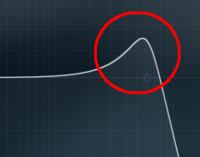Xorophone
Newbie level 5
I'm very new to electronics and now I'm trying to learn about circuit diagrams, but I have a problem.
I'm trying to build the circuit under "Step 1: The High Pass Filter" on the link below, but I don't know how to connect my 6.35mm (1/4") jacks to the circuit. I want to connect mono jacks to the input and output. What confuses me the most is the ground wire, but I need help with the rest too. I'm guessing I'm somehow supposed to connect a wire between the output and input, but which pin on the jacks do I use and why? How do I connect the jacks to the input and output wires?
Here's the link:
https://www.instructables.com/id/Passive-Filter-Circuits/
As a bonus question; Is it possible to connect a potentiometer to the circuit to control the cutoff point? If so, how and where do I connect it? Which type of potentiometer should I use?
Please try to use simple words to describe what you mean, because as you may have noticed I'm very inexperienced and having english as my second language doesn't make it easier either.
I'm thankful for any help I can get!
I'm trying to build the circuit under "Step 1: The High Pass Filter" on the link below, but I don't know how to connect my 6.35mm (1/4") jacks to the circuit. I want to connect mono jacks to the input and output. What confuses me the most is the ground wire, but I need help with the rest too. I'm guessing I'm somehow supposed to connect a wire between the output and input, but which pin on the jacks do I use and why? How do I connect the jacks to the input and output wires?
Here's the link:
https://www.instructables.com/id/Passive-Filter-Circuits/
As a bonus question; Is it possible to connect a potentiometer to the circuit to control the cutoff point? If so, how and where do I connect it? Which type of potentiometer should I use?
Please try to use simple words to describe what you mean, because as you may have noticed I'm very inexperienced and having english as my second language doesn't make it easier either.
I'm thankful for any help I can get!



